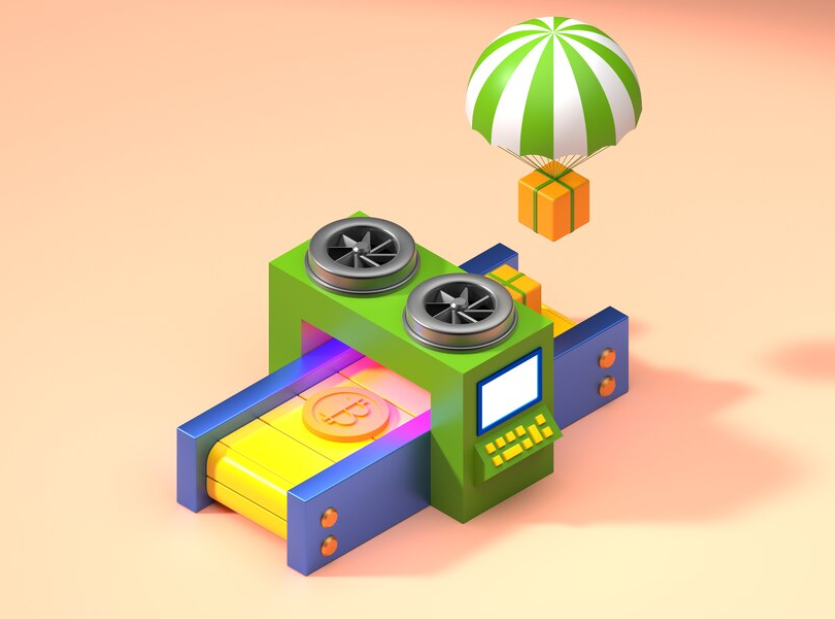Market capitalization, often referred to as "market cap," is a crucial metric that reflects the total value of a decentralized finance (DeFi) project or protocol. In the context of DeFi, where DeFi platforms operate without a central authority, market cap serves as a measure of the ecosystem's overall value in the Defi space and investor confidence.
Unlike traditional finance, where the market cap primarily revolves around the value of publicly traded companies' outstanding shares, the market cap in decentralized finance encompasses a broader spectrum.
The market cap provides investors and stakeholders with insights into the size, stability, and growth potential of a DeFi platform. It influences investment decisions, DeFi tokens pricing, and the overall perception of a project's viability and success. As such, understanding market capitalization is fundamental for navigating the dynamic and rapidly evolving DeFi landscape.
Key Drivers Influencing Market Cap of Decentralized Finance

Source: Freepik
Some factors impact the market capitalization of DeFi applications more than others. For example, the utility and functionality of a DeFi protocol or project heavily influence its market cap. Protocols offering innovative financial products, efficient trading mechanisms, or high-yield opportunities tend to attract significant investments, thereby boosting their market capitalization.
Security audits and the robust architecture of smart contracts enhance investor confidence and their interest in decentralized apps. Projects with a proven track record of security and transparency often command higher valuations, reflecting the importance of trust in the crypto industry.
User adoption plays a pivotal role in determining the market cap of DeFi applications. Protocols with a large and active user base tend to have higher valuations due to network effects and increased demand for their tokens or services.
DeFi platforms that facilitate interoperability and seamless integration with other protocols and platforms are perceived favorably by investors. Interconnected ecosystems contribute to a broader market reach and enhanced utility, driving up market capitalization.
Regulatory clarity and compliance measures impact investor sentiment and, consequently, market cap. Projects adhering to regulatory standards and demonstrating compliance with evolving legal frameworks are better positioned to attract institutional investments.
Tracing the Historical Evolution of DeFi Market Cap

Source: Freepik
The DeFi market cap has witnessed exponential growth since its inception, reflecting the sector's increasing prominence and adoption. In the early stages, the DeFi share in the market was relatively modest, with pioneering projects like Compound and Uniswap laying the groundwork for decentralized exchanges, lending, and automated market making.
However, as the ecosystem expanded and diversified, fueled by innovations in decentralized exchanges, lending platforms, and yield farming protocols, market cap surged to unprecedented levels. The summer of 2020 marked a significant milestone, with total value locked (TVL) in DeFi protocols surpassing $10 billion.
Throughout 2021, DeFi has experienced remarkable volatility and growth, driven by speculative fervor, yield farming incentives, and the emergence of novel DeFi primitives. Despite occasional setbacks, such as the infamous "rug pulls" and smart contract vulnerabilities.
As DeFi continues to mature and integrate with traditional finance, the market cap is poised to become an increasingly vital metric, reflecting the sector's evolution and mainstream adoption.
DeFi vs. Traditional Financial Institutions

Source: Freepik
The staggering growth of DeFi has led to a glaring market cap disparity between the decentralized finance sector and other financial institutions that represent traditional financial markets. While the traditional financial sector boasts trillions of dollars in market capitalization, DeFi's market cap, albeit rapidly growing, remains relatively modest. However, what sets DeFi apart is its exponential growth trajectory, fueled by innovative financial products and borderless accessibility.
DeFi's rise has not gone unnoticed by the traditional financial system which is increasingly exploring ways to integrate blockchain technology and decentralized protocols into its operations.
DeFi vs. Leading Crypto Assets

Source: Freepik
Comparing DeFi's market cap against leading cryptocurrencies unveils an intriguing narrative. While Bitcoin and Ethereum dominate the cryptocurrency market cap, DeFi projects have carved out a significant niche within the crypto ecosystem. DeFi's market cap, though smaller in absolute terms, reflects its relative position as a disruptive force reshaping the financial landscape.
The symbiotic relationship between DeFi protocols and other crypto assets, including utility and governance tokens, underscores the interconnected nature of the crypto space. DeFi's reliance on the Ethereum blockchain infrastructure mainly and cryptographic principles highlights its integration with the broader crypto ecosystem, contributing to its market cap growth.
DeFi vs. Other Crypto Sectors
Benchmarking DeFi's market cap against other crypto sectors such as non-fungible tokens (NFTs), centralized finance (CeFi), and emerging blockchain technologies provides valuable insights into the competitive and collaborative dynamics shaping the crypto landscape.
While NFTs, for example, have garnered attention for their unique digital assets, DeFi's market cap surpasses many niche sectors, reflecting its broader appeal for businesses and utility.
The competitive landscape between DeFi and other crypto sectors is nuanced, with overlaps and synergies. As DeFi continues to evolve, its integration with emerging blockchain technologies and collaboration with CeFi platforms are expected to influence market dynamics.
DeFi vs. Traditional Tech Industries
In the realm of traditional tech industries, DeFi's disruptive potential is evident in its market cap comparison against leading giants in e-commerce, social media, and cloud computing. While tech behemoths command substantial market capitalization, DeFi's innovative financial mechanisms and decentralized architecture pose a formidable challenge to established paradigms.
Insights into how DeFi's growth trajectory intersects with traditional tech industries highlight the potential for collaboration and competition. As DeFi gains momentum, its market cap growth reflects not only investor enthusiasm but also the broader shift towards decentralized systems and democratized finance without intermediaries.
As DeFi continues to evolve and integrate with the traditional financial system and crypto sectors alike, its market cap trajectory serves as a barometer of its disruptive potential and enduring relevance in shaping the future of decentralized applications and investing opportunities.
Unpacking the Catalysts Propelling DeFi Market Cap's Upward Trajectory

Source: Freepik
DeFi's appeal lies in its ability to offer access to innovative financial products and services, such as decentralized lending, automated market making, trading, and yield farming. These products cater to a global audience, providing accessibility, efficiency, and transparency previously unseen in traditional finance.
The influx of users into the DeFi ecosystem has played a pivotal role in driving market cap growth. As more individuals and companies recognize the potential of DeFi to democratize finance and generate yield, the demand for tokens and protocols has surged, propelling market valuations higher.
DeFi's interoperability with other blockchain networks, protocols, and other cryptocurrencies has expanded its reach and utility, fostering collaboration and innovation across the broader crypto space. Projects that facilitate seamless integration and interoperability tend to attract more users and attract the interest of investors, contributing to market cap growth.
The decentralized governance models adopted by many DeFi protocols empower community stakeholders to participate in decision-making processes, driving engagement, fostering trust, and allowing them to earn interest in providing services to the ecosystem. Governance tokens associated with DeFi projects often appreciate as the ecosystem matures, further boosting market cap.
Identifying Hurdles and Systemic Challenges for DeFi Market Cap Growth

Source: Freepik
Despite advancements in security measures, decentralized finance remains susceptible to vulnerabilities in smart contracts and security breaches. High-profile hacks and exploits can erode investor confidence and hinder market cap growth, highlighting the importance of robust security protocols and audits.
The regulatory landscape surrounding DeFi remains uncertain and evolving, with potential implications for market cap growth. Regulatory crackdowns or stringent compliance requirements could limit the expansion of DeFi projects and dampen investor enthusiasm, affecting market valuations.
Scalability remains a significant challenge for DeFi, especially those running on the Ethereum blockchain. Improving scalability and enhancing infrastructure is critical for accommodating growing user demand and sustaining market cap growth.
DeFi markets are highly volatile, and DEfi tokens, like any other crypto assets, are prone to sharp fluctuations and speculative activity. While volatility can present lucrative trading opportunities, it also poses risks for investors and projects alike. Mitigating market volatility through risk management strategies and market education is essential for fostering sustainable market cap growth.
In conclusion, understanding the catalysts driving DeFi market cap growth, as well as the hurdles and challenges facing the ecosystem, is essential for navigating the dynamic landscape of decentralized finance. By addressing systemic challenges and fostering innovation, DeFi has the potential to continue its upward trajectory, reshaping the future of finance in the process.
Envisioning the Future: The Evolution of DeFi Market Cap
As the decentralized finance sector continues to gain momentum, projecting the future trajectory of its market cap is both challenging and intriguing. However, by analyzing current trends and emerging dynamics, we can speculate on potential growth patterns and reverberations across traditional and crypto industries.
Forward-looking Predictions on DeFi Market Cap Growth

Source: Freepik
DeFi's market cap is poised for exponential growth in the coming years, driven by increasing user adoption, technological innovation, and mainstream recognition. As the decentralized financial system matures and expands its offerings allowing users to earn interest on lending assets and providing liquidity, get profit from trading, and benefit from offering other services to the system, the market cap could soar to new heights, rivaling traditional financial institutions.
DeFi's growth is likely to blur the lines between traditional finance and decentralized systems, leading to greater integration and collaboration. Traditional financial institutions, recognizing the efficiency and scalability of DeFi, may adopt blockchain technology and explore partnerships with DeFi protocols, further fueling market cap growth.
Long-term Implications of DeFi's Maturation
DeFi protocols gain traction and disrupt traditional business models, and the balance of power within the financial ecosystem could shift, eliminating intermediaries such as banks and leading to greater democratization and accessibility.
DeFi's maturation is synonymous with technological innovation, driving advancements in blockchain infrastructure, smart contract development, and decentralized governance. These innovations have far-reaching implications beyond finance, influencing various sectors such as supply chain management, healthcare, and voting systems.
One requires only an internet connection to access DeFi. It means that the new finance holds the promise of fostering greater financial inclusion on a global scale, providing underserved communities with access to banking services such as getting a loan or insurance, and investment opportunities. By eliminating barriers to entry and decentralizing financial infrastructure, DeFi has the potential to empower individuals and reshape socio-economic landscapes.
Conclusion
In conclusion, the future outlook for DeFi market cap growth is one of immense potential and transformative impact. As DeFi continues to mature and integrate with traditional and crypto industries, its market cap will serve as a testament to its disruptive force and enduring relevance in shaping the future of finance and technology.












